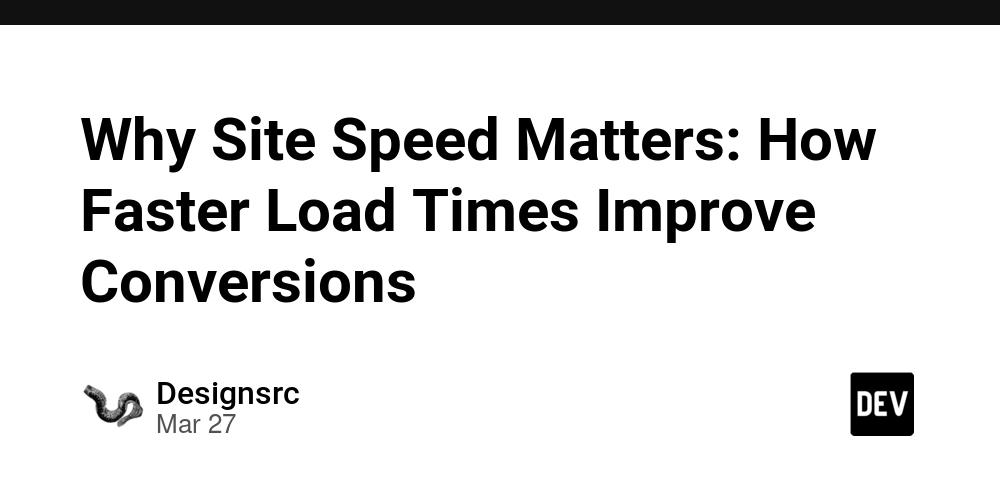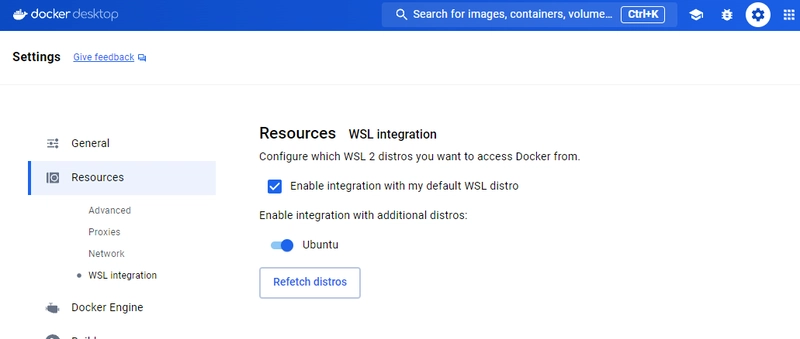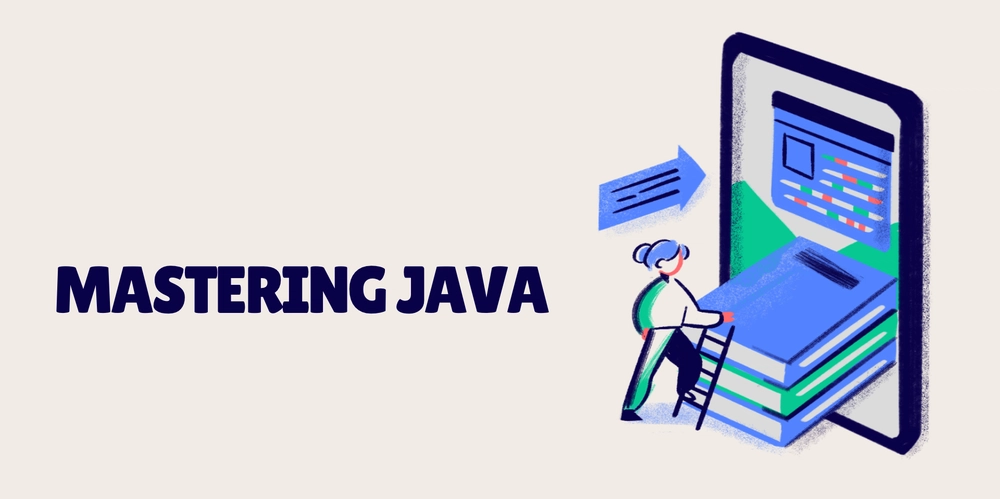Why Site Speed Matters: How Faster Load Times Improve Conversions
In today’s fast-paced digital world, customers expect websites to load instantly. If a site takes too long to load, visitors are likely to leave, leading to lost sales and reduced engagement. Site speed and Performance optimization are crucial factors that impact user experience, search engine rankings, and overall conversion rates. Businesses looking to enhance their online presence can benefit from expert solutions offered by Designsrc to ensure a seamless shopping experience. The Impact of Site Speed on User Experience 1. First Impressions Matter When a potential customer visits your website, their first impression is shaped within seconds. A fast-loading website instills trust and professionalism, whereas a slow site can frustrate users and drive them away. Studies show that 53% of mobile users abandon a site that takes longer than 3 seconds to load, emphasizing the need for speed optimization. 2. Reduced Bounce Rates A slow-loading website increases the likelihood of visitors leaving before interacting with content. Google’s research suggests that as page load time goes from 1 second to 5 seconds, the probability of bounce increases by 90%. Ensuring a fast website keeps users engaged, reducing bounce rates and increasing the chances of conversions. 3. Improved Customer Satisfaction Fast websites create a seamless browsing experience, leading to higher customer satisfaction. Visitors are more likely to explore multiple pages, interact with products, and complete purchases when they don’t have to wait for content to load. Site Speed and SEO Rankings Search engines like Google prioritize site speed as a ranking factor. Faster websites tend to rank higher in search results, leading to increased organic traffic. Google’s Core Web Vitals measures user experience through metrics like Largest Contentful Paint (LCP), First Input Delay (FID), and Cumulative Layout Shift (CLS), all of which are influenced by site speed. By improving load times, businesses can enhance their SEO strategy, leading to better visibility and higher conversion rates. How Faster Load Times Boost Conversions 1. Faster Checkout Process For e-commerce businesses, a fast site means a smoother checkout process. Customers are more likely to complete a purchase if there are no delays when adding items to their cart or processing payments. A 1-second delay in load time can reduce conversions by 7%, directly impacting revenue. 2. Higher Engagement and More Sales A website that loads quickly encourages visitors to stay longer, explore more products, and engage with the content. According to research, pages that load within 2 seconds have an average conversion rate of 1.9%, while pages that take 5 seconds to load have a conversion rate of just 0.6%. 3. Better Mobile Experience With the majority of online traffic coming from mobile devices, optimizing for mobile speed is crucial. Accelerated Mobile Pages (AMP) and responsive design techniques help create a fast, mobile-friendly experience that keeps customers engaged and leads to higher conversion rates. Practical Tips to Improve Site Speed 1. Optimize Images and Media Use compressed image formats like WebP to reduce file sizes. Implement lazy loading to defer loading images that aren’t immediately visible. 2. Minimize HTTP Requests Reduce the number of JavaScript, CSS, and image files that need to be loaded. Combine files where possible to decrease load times. 3. Enable Browser Caching Store frequently accessed files in the user’s browser to improve subsequent page loads. 4. Use a Content Delivery Network (CDN) A CDN distributes content across multiple servers worldwide, ensuring faster access to website data. 5. Optimize Server Response Time Upgrade to faster hosting solutions like cloud-based or dedicated servers. Reduce the use of heavy plugins that slow down site performance. Conclusion Site speed is a critical factor in determining online success. Faster websites lead to better user experiences, higher search rankings, and improved conversion rates. By implementing performance optimization techniques, businesses can ensure that their customers stay engaged and complete more transactions. For expert assistance in site speed and performance optimization, check out the solutions offered by Designsrc to enhance your website’s speed and overall user experience.

In today’s fast-paced digital world, customers expect websites to load instantly. If a site takes too long to load, visitors are likely to leave, leading to lost sales and reduced engagement. Site speed and Performance optimization are crucial factors that impact user experience, search engine rankings, and overall conversion rates. Businesses looking to enhance their online presence can benefit from expert solutions offered by Designsrc to ensure a seamless shopping experience.
The Impact of Site Speed on User Experience
1. First Impressions Matter
When a potential customer visits your website, their first impression is shaped within seconds. A fast-loading website instills trust and professionalism, whereas a slow site can frustrate users and drive them away. Studies show that 53% of mobile users abandon a site that takes longer than 3 seconds to load, emphasizing the need for speed optimization.
2. Reduced Bounce Rates
A slow-loading website increases the likelihood of visitors leaving before interacting with content. Google’s research suggests that as page load time goes from 1 second to 5 seconds, the probability of bounce increases by 90%. Ensuring a fast website keeps users engaged, reducing bounce rates and increasing the chances of conversions.
3. Improved Customer Satisfaction
Fast websites create a seamless browsing experience, leading to higher customer satisfaction. Visitors are more likely to explore multiple pages, interact with products, and complete purchases when they don’t have to wait for content to load.
Site Speed and SEO Rankings
Search engines like Google prioritize site speed as a ranking factor. Faster websites tend to rank higher in search results, leading to increased organic traffic. Google’s Core Web Vitals measures user experience through metrics like Largest Contentful Paint (LCP), First Input Delay (FID), and Cumulative Layout Shift (CLS), all of which are influenced by site speed.
By improving load times, businesses can enhance their SEO strategy, leading to better visibility and higher conversion rates.
How Faster Load Times Boost Conversions
1. Faster Checkout Process
For e-commerce businesses, a fast site means a smoother checkout process. Customers are more likely to complete a purchase if there are no delays when adding items to their cart or processing payments. A 1-second delay in load time can reduce conversions by 7%, directly impacting revenue.
2. Higher Engagement and More Sales
A website that loads quickly encourages visitors to stay longer, explore more products, and engage with the content. According to research, pages that load within 2 seconds have an average conversion rate of 1.9%, while pages that take 5 seconds to load have a conversion rate of just 0.6%.
3. Better Mobile Experience
With the majority of online traffic coming from mobile devices, optimizing for mobile speed is crucial. Accelerated Mobile Pages (AMP) and responsive design techniques help create a fast, mobile-friendly experience that keeps customers engaged and leads to higher conversion rates.
Practical Tips to Improve Site Speed
1. Optimize Images and Media
Use compressed image formats like WebP to reduce file sizes.
Implement lazy loading to defer loading images that aren’t immediately visible.
2. Minimize HTTP Requests
Reduce the number of JavaScript, CSS, and image files that need to be loaded.
Combine files where possible to decrease load times.
3. Enable Browser Caching
Store frequently accessed files in the user’s browser to improve subsequent page loads.
4. Use a Content Delivery Network (CDN)
A CDN distributes content across multiple servers worldwide, ensuring faster access to website data.
5. Optimize Server Response Time
Upgrade to faster hosting solutions like cloud-based or dedicated servers.
Reduce the use of heavy plugins that slow down site performance.
Conclusion
Site speed is a critical factor in determining online success. Faster websites lead to better user experiences, higher search rankings, and improved conversion rates. By implementing performance optimization techniques, businesses can ensure that their customers stay engaged and complete more transactions.
For expert assistance in site speed and performance optimization, check out the solutions offered by Designsrc to enhance your website’s speed and overall user experience.









































































































































































![[The AI Show Episode 142]: ChatGPT’s New Image Generator, Studio Ghibli Craze and Backlash, Gemini 2.5, OpenAI Academy, 4o Updates, Vibe Marketing & xAI Acquires X](https://www.marketingaiinstitute.com/hubfs/ep%20142%20cover.png)



























































































































![[FREE EBOOKS] The Kubernetes Bible, The Ultimate Linux Shell Scripting Guide & Four More Best Selling Titles](https://www.javacodegeeks.com/wp-content/uploads/2012/12/jcg-logo.jpg)



![From drop-out to software architect with Jason Lengstorf [Podcast #167]](https://cdn.hashnode.com/res/hashnode/image/upload/v1743796461357/f3d19cd7-e6f5-4d7c-8bfc-eb974bc8da68.png?#)






































































































.png?#)




.jpg?#)
































_Christophe_Coat_Alamy.jpg?#)








































































































![Rapidus in Talks With Apple as It Accelerates Toward 2nm Chip Production [Report]](https://www.iclarified.com/images/news/96937/96937/96937-640.jpg)








































































































































